[This is just one of many articles in the author’s Astronomy Digest.]
Before we had computerised Alt/Az mounts, most amateurs will have employed an equatorial mount to support their telescopes as, once aligned, only a constant drive rate in Right Ascension is required to track an object across the sky. The problem is with the words ‘once aligned’ which appears to be a major stumbling block for beginners. The requirement is that the ‘Polar Axis’ of the mount be pointed up towards the North Celestial Pole – close to Polaris. Usually, there is an angular scale and pointer that enables one to lift the polar axis to the right elevation when the pointer is simply set to the observer’s latitude. A compass can be used to find North and, pleasingly, the difference between magnetic north and true north currently varies by no more than two degrees across the UK. Once approximately correct, the alignment can be improved if necessary by using a ‘polar scope’ or even a device such as the ‘QHY Polemaster’ that can provide near perfect alignment within just a few minutes.
Load capacity
Manufacturers usually state a maximum load for their mounts which should be regarded as the allowable load when the mount is supporting a compact telescope for visual use. Compact telescopes would include short focal length refractors, Schmidt-Cassegrains and Maksutovs. These have a low ‘moment of inertia’ relative to their weight – the masses of the major components are not far from the telescope’s mounting point. On the other hand, long focal length refractors and Newtonians, having their weight concentrated at their extremes, have a high moment of inertia relative to their weight. The load capacity should then be de-rated down to two thirds of nominal if such telescopes are to be used.
If a telescope is to be used for imaging, not only will the moment of inertia be increased with the additional weight of the camera but the effects on images due to slight vibrations or wind fluctuations can prove a problem. In such cases many authorities would recommend de-rating the specified load by up to a half.
Equatorial Mounts in this price range
These are dominated by the wide range of mounts produced by Sky-Watcher although Meade, Celestron and Explore Scientific provide alternative examples.
£200 – £400 mounts
The lowest cost mounts such as the ‘Sky-Watcher EQ3-2’ (Figure 1) at ~£200 are provided with slow-motion manual drives but can be upgraded with motor drives either in RA alone or in both RA and DEC (little adjustment should be required in Dec when following an object across the sky). This mount can even be upgraded to a computerised GOTO system for a further ~£350. One point: the tripods for these low cost mounts can be quite lightweight and not that stable so I filled the legs of mine with sand making them rather heavy but far better in use. The sand also greatly damps down any vibration that might be set up when adjusting the telescope pointing.
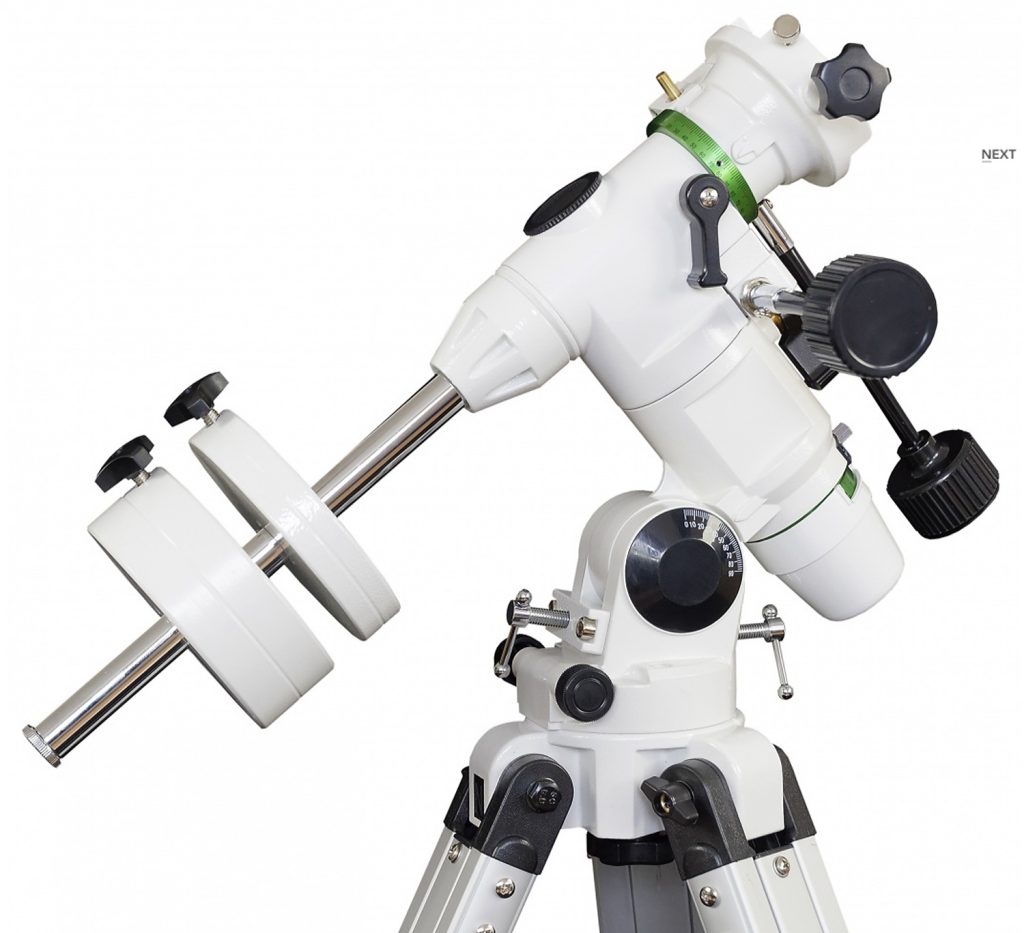
To be honest, I would recommend spending a further ~£100 to purchase an ‘EQ5 Deluxe Mount and Tripod’ (Figure 2) which has a far sturdier tripod and the greater nominal load capacity of ~20 pounds rather than the ~11 pounds of the EQ3-2 mount. For this mount, a motorised drive system can be added for a further £120.
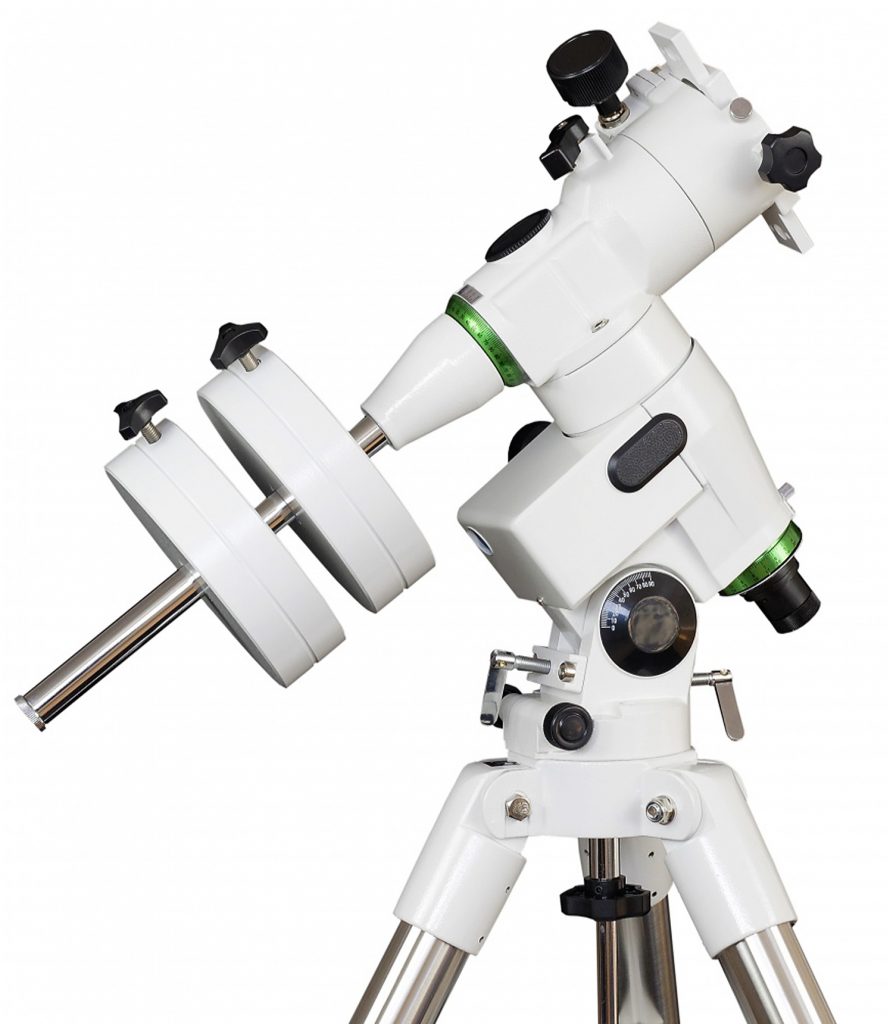
One very interesting mount within this price range is the ‘Explore Scientific IEOS-100 PMC-Eight Equatoral Mount’ (Figure 3). In contrast to all others included in this article, it is controlled by WiFi from notebooks such as the iPad or Windows 10 laptops. For visual use it can support a total weight of 19 pounds and for photographic use, 15 pounds. A belt drive is employed which reduces slewing noise and improves the tracking ability. Autoguiding is also possible. It looks to be extremely good value and is one of the ‘new generation’ of computer assisted mounts. I own this mount and there is a full review in the digest. [The Explore Scientific …..]
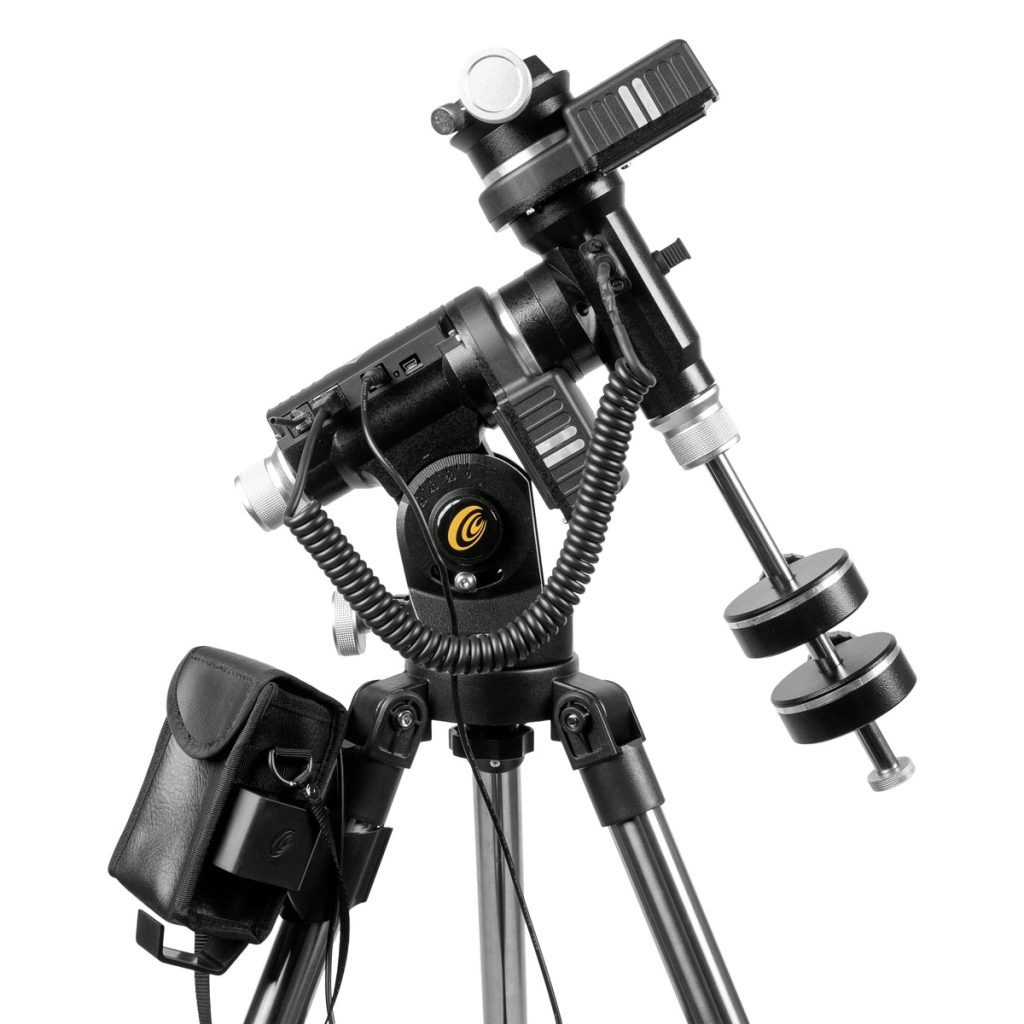
£400 to £600 mounts
The only mount in this price range that I can find is the Sky-Watcher EQ5 Pro GOTO Equatorial Mount & Tripod (Figure 4) which costs ~£569 so the ‘GOTO’ ability is costing nearly £300 more than the manual mount.
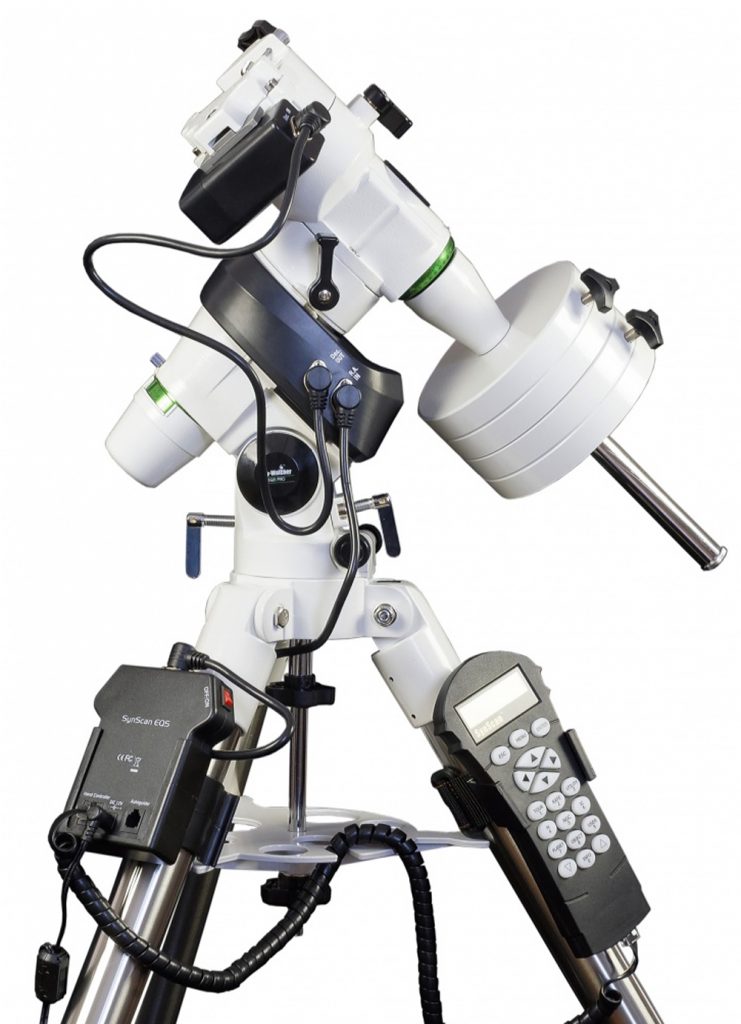
£600 to £800 mounts
In this price range we have computerised mounts from Meade and Celestron as well as those made by Sky-Watcher. At a cost of ~£749 Meade can supply their ‘LX85 Computerised GOTO Mount’ (Figure 5). It employs an ‘Audiostar’ hand controller whose built-in speaker provides descriptions of over 500 night sky objects as they are viewed in the eyepiece.
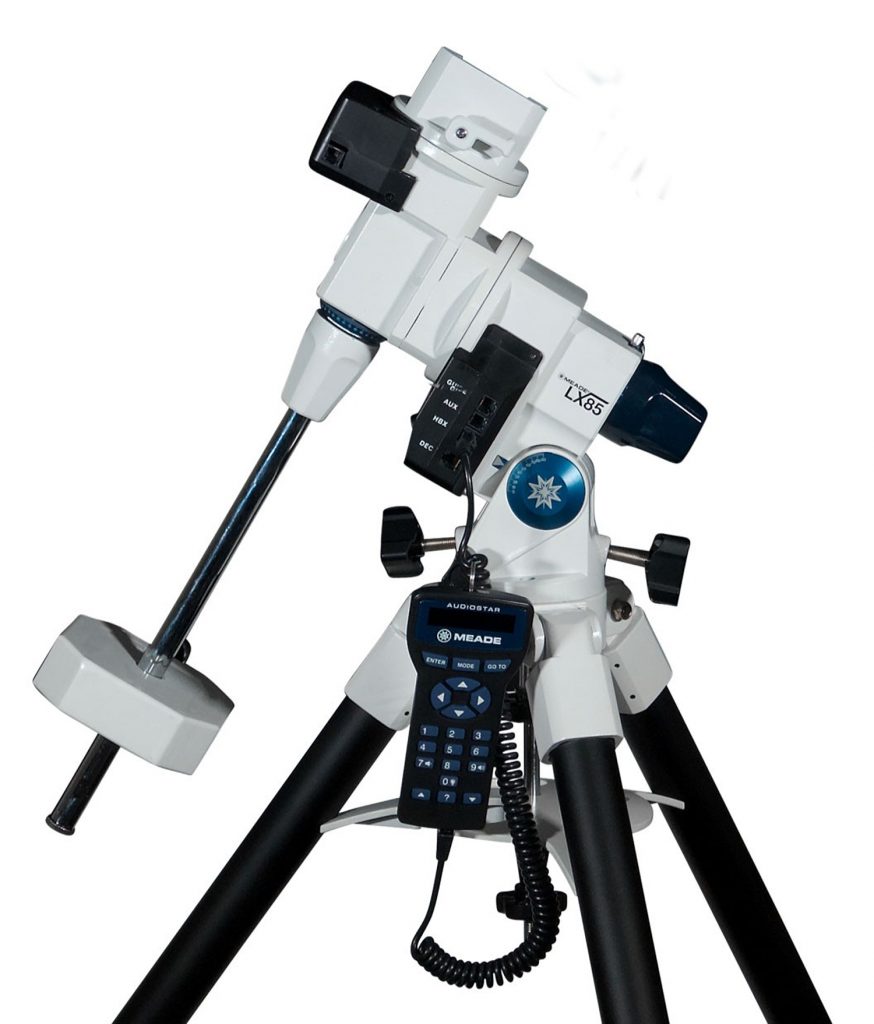
At a cost of ~£780, Celestron provide their ‘Advanced VX GOTO Equatorial Mount’ (Figure 6) which has been ‘specifically designed to provide optimum imaging performance when used with smaller telescopes‘ and allows for autoguiding and periodic error correction; the latter improving the tracking performance. So this could be a good purchase for those hoping to make a start in astroimaging. It has a maximum load capacity of 30 pounds.
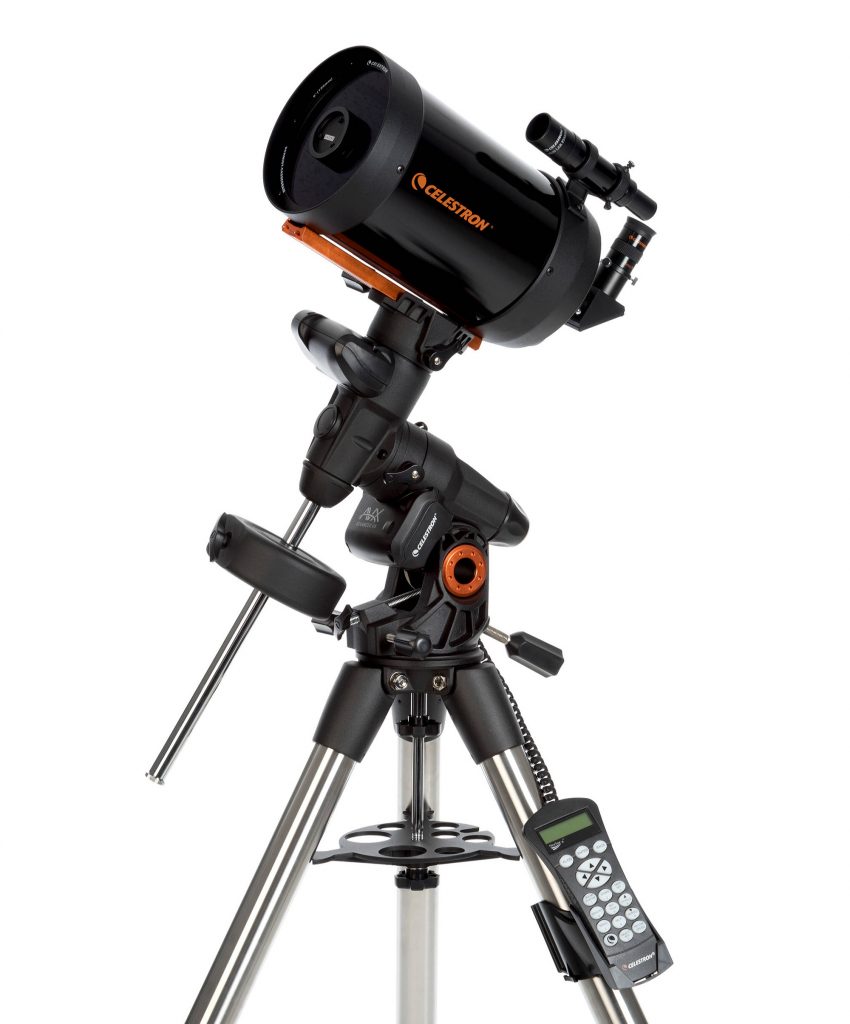
Sky-Watcher have their ‘HEQ5 Pro GOTO Mount & Tripod’ (Figure 7) at a cost of ~£790, again having a maximum load capacity of 30 pounds for visual use. Judging from members in my astronomical society, I suspect that this must be one of the most widely used mounts employed by amateur astronomers. As with the Celestron Mount, it allows for autoguiding and periodic error correction and includes a polar telescope.
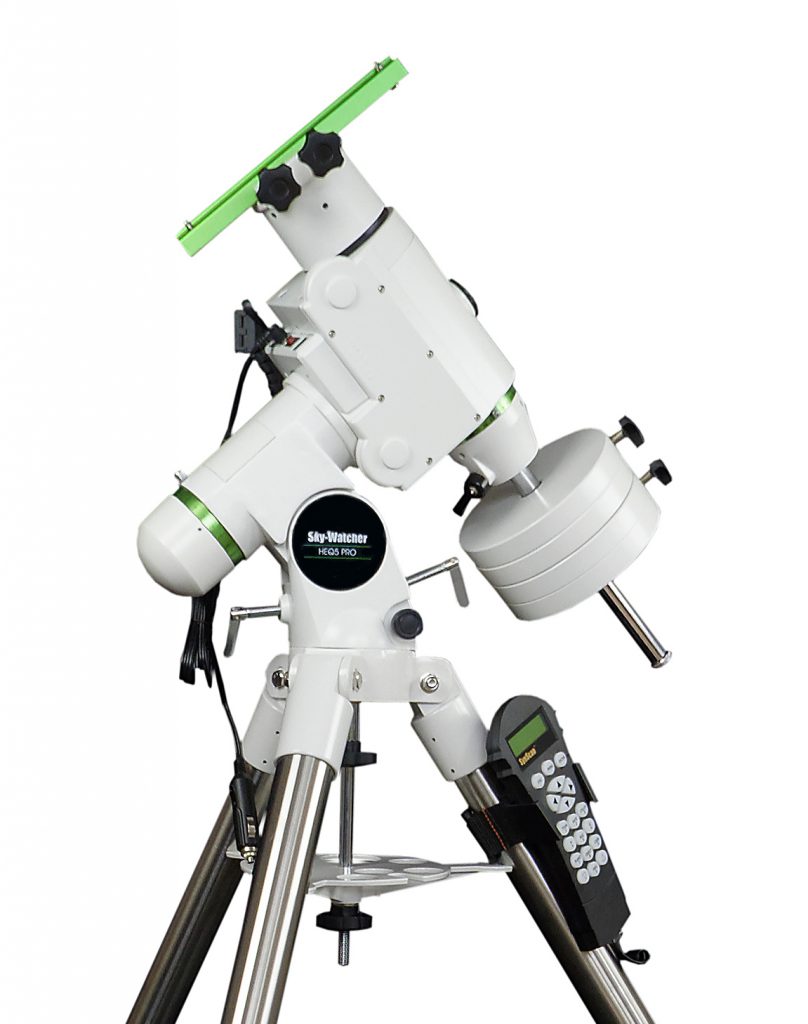
£800 to £1,100 mounts
Just within this price range at £1,099, Sky-Watcher provide the ‘NEQ6 Pro GOTO Mount & Tripod‘ (Figure 8). This has a nominal load capacity of 35 pounds, includes an illuminated polar scope and allows for autoguiding. This is also a very widely used mount. Also in this price range at a cost of £955 is the ‘HEQ5 Pro GOTO Mount with Rowan Belt Modification’ as discussed below.
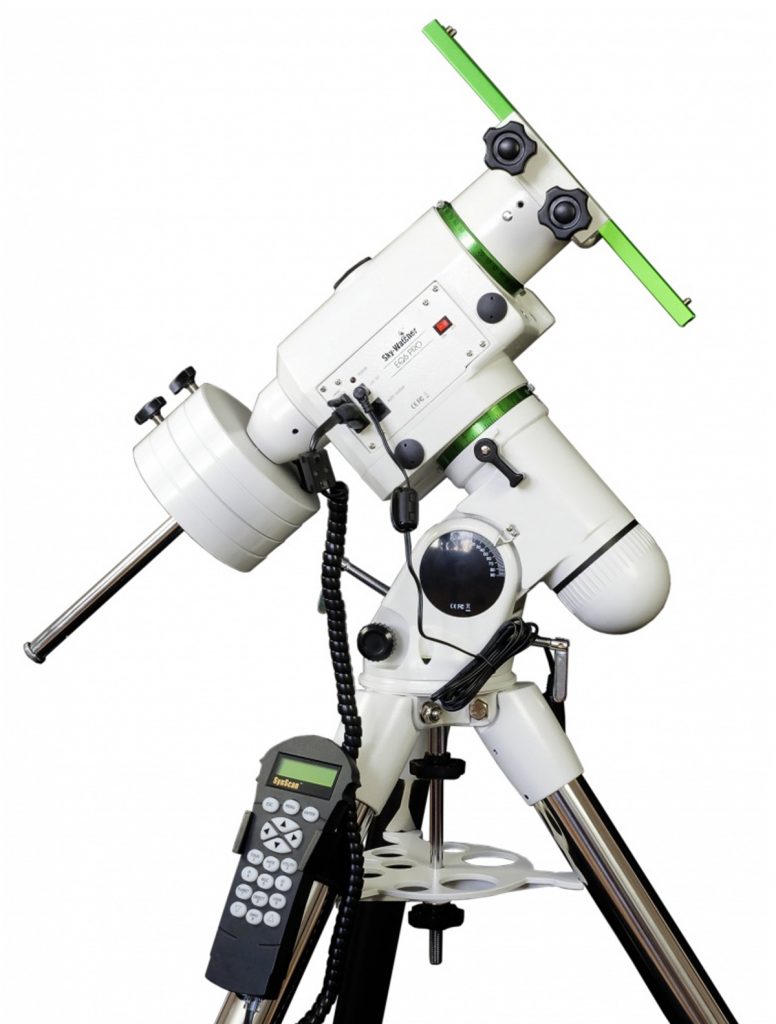
Perhaps the most useful website to learn about the wide variety of equatorial mounts available, giving far more details that I can here, is that provided by Rother Valley Optics. They can also provide a DVD ‘The RVO Beginner’s Guide to Equatorial Mounted Telescopes’ at a cost of £6.99. I suspect that this would be a very worthwhile purchase for those considering one of these telescope mounts.
Upgrades and servicing to Mounts
Rather than at some future time upgrading to a ‘premium’ mount costing sometimes well over £1,000, lower cost mounts can often be upgraded or ‘tuned’ to improve their performance. One example is the Sky-Watcher HEQ5 Pro mount whose spur gears can be replaced with a ‘Rowan Belt Drive’ system. This eliminates the noise produced by the gears when slewing and also improves the tracking performance. A kit for self assembly can be bought for around £100 but companies will install it for you and, as mentioned above, one can even purchase an already equipped mount.
